Campus Additions
Rock wall and garden provide hands-on learning for students
Thanks to the generosity of an alumni donor and the efforts of department faculty and staff, Van Wickle Hall is home to two new features that will enhance its educational capabilities.
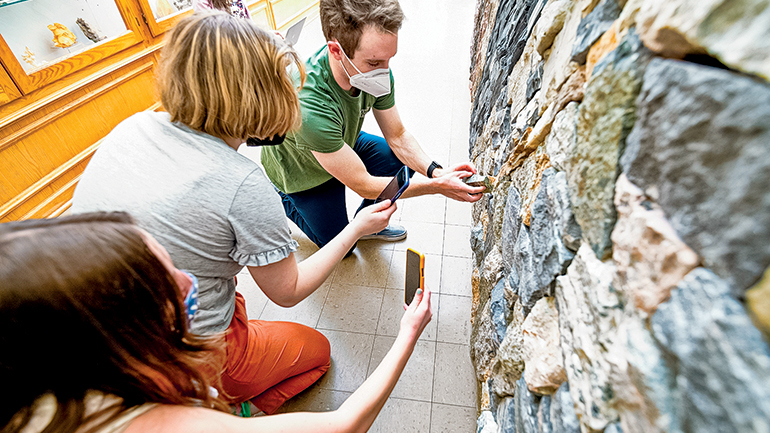
Rock Wall
A new cross-section rock wall was constructed inside Van Wickle in January 2021. The wall, which stands about 4 feet tall and 20 feet in length, features slices of rocks that represent 1.2 billion years of geologic history. Rocks are arranged from oldest to youngest, and placed as they would be in their original geologic orientation on Earth. The project was a labor of love for several members of the department who collected specimens from 11 different locations between October 2020 and January 2021. Tamara Carley, associate professor of geology, David Sunderlin, associate professor of geology, Jennie Pinho, instrument support specialist, and John Wilson, laboratory coordinator, selected and hauled specimens from a variety of rock formations including Catskill, Shawangunk, and Jacksonburg.

Rock Garden
This summer an outdoor rock garden came to life on the east side of Van Wickle, facing Colton Chapel. The open-air geological museum will complement the interior wall as it will feature the same rocks used in the wall, giving students an opportunity to study them as full specimens. The garden also features large-scale “wow” rocks, which came from a wide array of locations, beyond Pennsylvania. The outdoor feature will work as an extension of the classroom, putting students in easy reach of hands-on learning opportunities. “It’s very exciting because these features will help students build their geological skills here on campus, right in our backyard,” Wilson says. “When they go into the field as part of one of our remote fieldwork experiences, they’ll be even more prepared.” The hope is that the garden will become a campus attraction that will educate the entire Lafayette community. Interpretive signage will help visitors navigate the area and invite them to learn more about geology inside Van Wickle.
New Dyer program helps students become entrepreneurial leaders
The Dyer Center for Innovation and Entrepreneurship launched a new four-year program to develop the next generation of innovators, students unafraid to brush off failures and turn ideas into impact. Designing Your Entrepreneurial Roadmap (D.Y.E.R.) fellows combine Lafayette’s extensive classroom resources, a broad range of liberal arts thinking, a committed alumni network, and robust experiential learning.
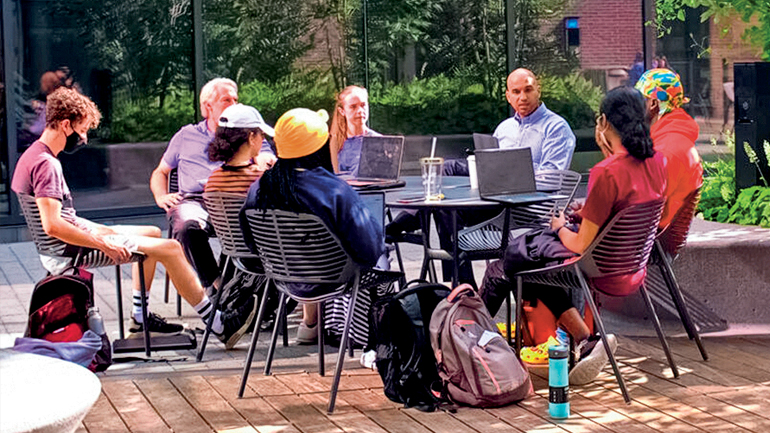
Dyer Center Director Yusuf Dahl with the inaugural group of D.Y.E.R. fellows.
Over four years, D.Y.E.R. fellows enhance entrepreneurial thinking and skills, hone personal understanding, leverage hands-on ventures, and develop broad-based networks. Fellows earn a monthly stipend. For those who move through the rigors of each year, their junior year culminates with a $4,000 investment in an entrepreneurial venture.
The program is specifically focused on students who have lacked access to the innovation marketplace, specifically underrepresented and first-generation college students. “We want to widen the circle and welcome the amazing talent of first-generation and underrepresented groups who have the ideas and desire to change the world,” says Yusuf Dahl, director of the center.
Lafayette to receive $10 million photography gift
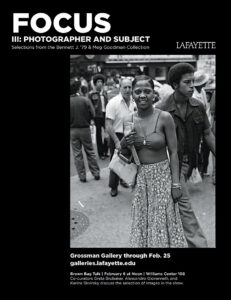
Focus III: Photographer and Subject showcased images from an earlier gift of more than 1,700 photographs to Lafayette from the Goodmans at an exhibition held at the Grossman Gallery in 2017.
Bennett J. ’79 and Meg Goodman are gifting Lafayette a photography collection valued at more than $10 million that will enhance teaching, learning, and diversity initiatives on campus and beyond. The collection includes more than 3,000 vintage documentary images of powerful and thought-provoking moments in civil rights history as captured by some of the most notable names in photojournalism. It is one of the largest private collections of civil rights photography. The photographs will be incorporated into teaching and learning initiatives, and will add programming opportunities focused on diversity, equity, and inclusion.
“We look forward to the many ways we will share the iconic images in this collection with our community,” says President Nicole Farmer Hurd. “We are considering multiple opportunities to display these photographs in buildings on campus, including the President’s House, Kirby Hall of Civil Rights, and through exhibitions for the greater Lehigh Valley community.”
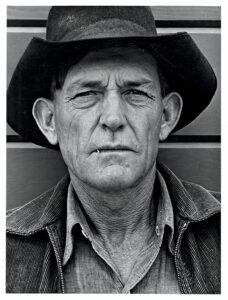
A selection from the prior Goodman gift of photography. Photographer: Arthur Rothstein (American, 1915-85) Rancher, Montana, (1938)
The extensive World Photography Collection comprises photographs from the 1950s through the 1980s representing the United States, Europe, Latin America, Asia, and Africa, and including important moments from the American Civil Rights Movement. The collection features more than 1,600 images from the Associated Press and leading newspapers of United States history, including the Attica Prison Uprising of 1971, the Incident at Wounded Knee in 1973 and other Native American civil rights movements, portraits of civil rights leaders including Rev. Martin Luther King Jr., as well as photos from additional protests across the nation. This is the second gift of photography received from the Goodman family.
Improving Access
Lafayette College is taking two steps to improve access to its education for low-income and middle-class families.
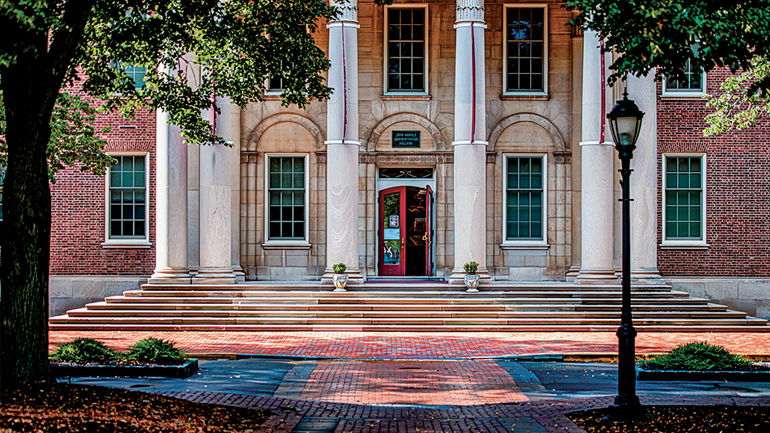
First, applicants for the 2022-23 academic year who attend high schools at which 75% or more of students qualify for free or reduced lunch are no longer required to complete the complex College Scholarship Service Profile, or CSS Profile, in order to receive financial aid. Created by the College Board, the CSS Profile is a financial aid application used for determining demonstrated need for institutional grants and is a supplemental form to FAFSA.
Second, applicants for the 2022-23 academic year from families with total family incomes of up to $150,000 and typical assets for families in this income group will have their financial need met through grants and work-study, without any loans.
“These two actions allow us to welcome talented students who know that Lafayette is the right fit for their growth and success,” says Lafayette President Nicole Farmer Hurd. “They can now dedicate their attention to academic knowledge, personal growth, and professional development instead of worrying about costs, loans, and debt.”
The College will report back findings from this new approach in order to help guide other institutions and improve access for low-income and underrepresented students.